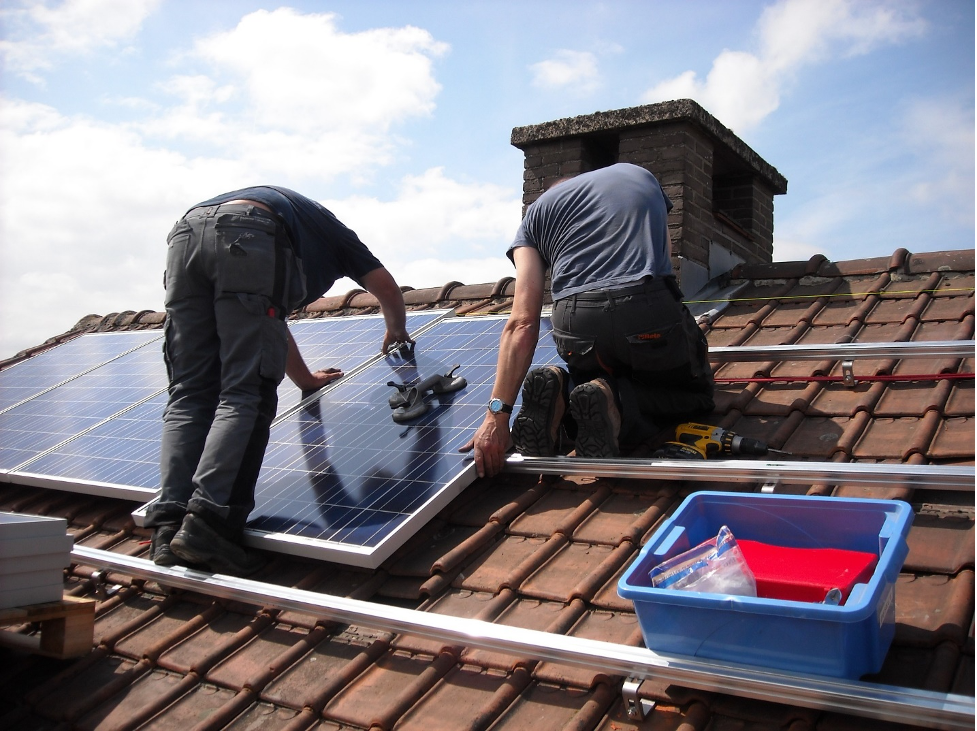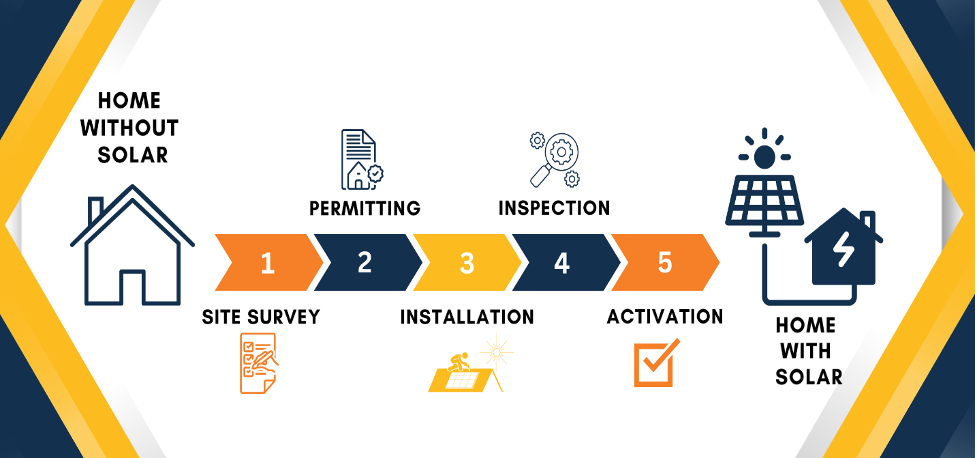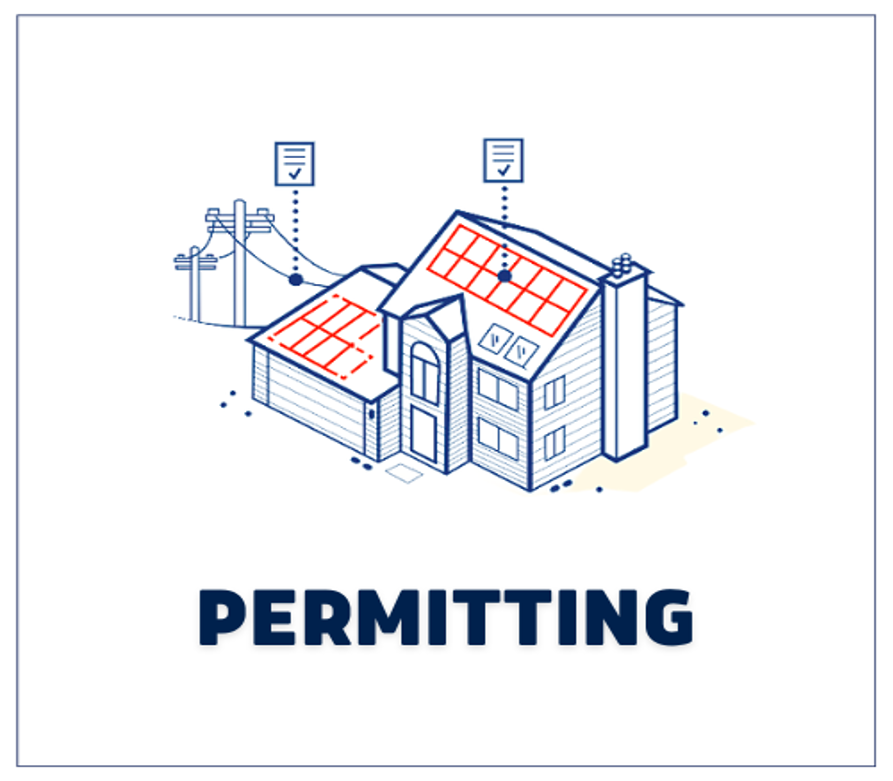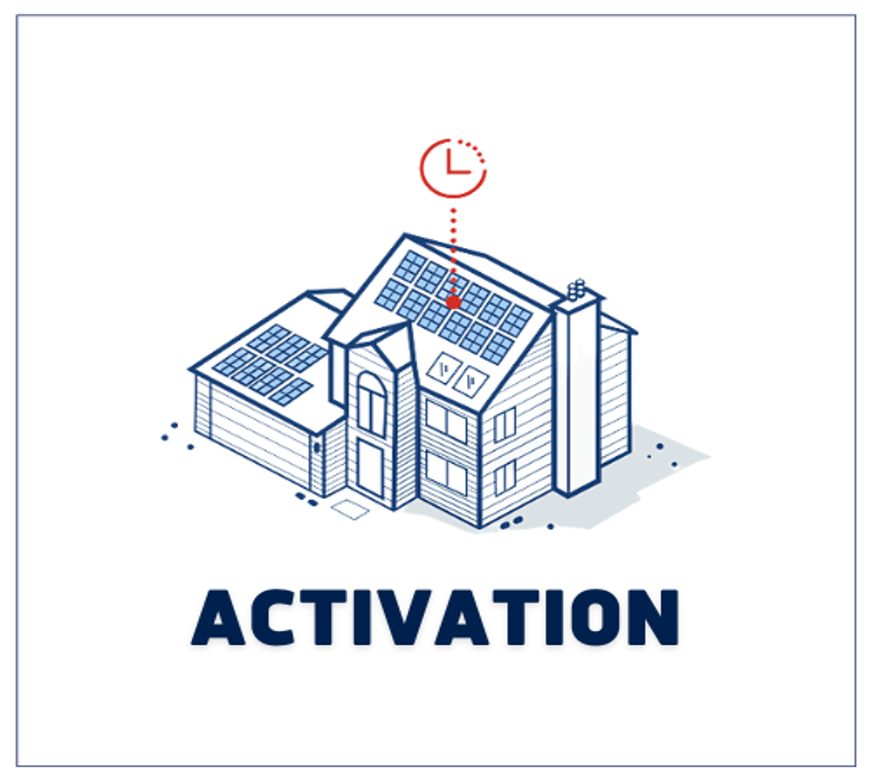- Published On:
Installation Of The Solar System: Guideline For Installation Period
In the US, the total number of solar installations will triple by the mid-century. This boom in the installation of the solar system is the result of improvements in solar technology, easy accessibility, and the promotion of solar energy through federal tax credits, solar rebates, and solar renewable credits. Going solar is actually a lengthy process. In total, from system design to permission to operate, it can take about two to six months for your solar system to be up and running. While some good solar installer companies like Solar SME can install solar panels in about three months.

The actual installation process only takes about one to three days, the rest of the time period is spent on system design, permit approval, and final inspection of your solar system. There are a lot of hurdles to surpass but a good solar installer like Solar SME can make your journey toward clean renewable energy streamline with reliability and efficiency. This installation guide by Solar SME will help you get a clear picture of the installation of the solar system. From consultation to installation and post-installation monitoring Solar SME will take care of all the necessary steps required for solar installation.

Solar Installer Company Selection
The first step towards the installation of the solar system is to find a solar installer that is budget-friendly and reliable as well. A certified company is a reliable company. Always check for the license and certifications of the company that you are choosing to sign the solar contract with. Make sure the company is NABCEP certified like Solar SME. Also, check the experience and review section of the installer, it will give you a glimpse of what project the company has experienced and how quickly they can complete a solar project.
Solar installation
Once you settle on the solar installer, they will arrange a series of visits. During this, they will analyze your home size, structure, and your past electricity bills. This will help them to decide the perfect size and design of solar panel systems required by your household. The installation of the solar system can take about one to three days. At Solar SME, our installer will contact you to set the date for the initial appointment leads to the actual installation date. Our NABCEP-certified team will work quickly yet efficiently as possible to make your solar system up and running in the shortest span of time.

Factors That Can Delay The Installation Process:
The installation of the solar system depends on the size, design, and type of solar panels. The more complex the design of your solar panel system or the greater the number of solar panels required by your home, the longer this period will be.
The Consultation Period for the Installation of the Solar System
An initial consultation is essential before installing solar panels. It will help you to understand how the installer company is going to proceed. Through this meeting, you will able to receive a customized solar system design for your home as well as a personalized solar quote. Despite this, you also need to discuss all the available financing options in this initial consultation. Try to get as much information as possible regarding solar and federal solar incentives from the installer company. These incentives can be:
1. Net Metering:
This is a billing agreement between you and your utility grid station. This agreement allows you to send back the extra energy produced back to the utility grid. In return, the utility companies will provide you with solar renewable energy credits. The credits can be used to lower your winter utility electrical bill. Otherwise, if they remain unused you can cash these credits out. In 41 States and Washington D.C, Net Metering is compulsory. But some states are changing their Net Metering policies with the recent passage of NEM 3.0. This will not allow solar homeowners to sell the extra energy to grid stations. California is also changing its net metering policy soon.
2. Federal Rebates:
The solar investment tax credit (ITC) is a great way to reduce the initial installation cost of your solar systems. ITC slashes 30% of your solar installation cost. The recent passage of the Inflation Reduction Act, by the Biden administration, can prove beneficial for homeowners. Through this act, the limit of 30% solar credits is extended till 2034. This extension will help the nation to move towards net zero emissions.
3. State Incentives:
Certain state governments and utility companies provide their residents with tax breaks to promote clean and renewable energy. Texas is leading the nation in the installation of the solar system as it has the best local tax credits system available in its state. Only 2% of land in Texas is regulated by the federal government which allows the Texas State government to deregulate the energy market. Hence, creating a sustainable solar market for its residents. Iowa is the only state in the US with transferable tax credits. This means the recipient of solar credits can sell their credits to a third party.
In this consultation meeting, try to ask the installer company about the local as well as federal incentives. Despite the solar financing options, Solar SME will also check your home’s suitability for solar energy. We will make a thorough examination of your home location and check your home’s suitability through the Sun Score Number. It will not only help you to decide the most suitable option available for your home but also save you a lot of precious time. After that, if you are ready to start your renewable journey, you will sign an agreement with us.
Site assessment and visits: 1 - 2 Weeks
After the finalization of the agreement, in the next step, the solar installer will arrange a series of site visits in order to custom-design solar systems for your home. Custom designing may require certain specialists. Larger companies, like Solar SME, have all the licensed and certified staff members under their belt while smaller companies may subcontract with electricians and roofing companies to get the job done.

1. Solar contractor:
A solar contractor will examine your rooftop to determine the azimuth (the direction of the sunset) and the total sun exposure. This will eventually help to maximize the energy production of your solar panel systems.
2. The electrician:
In the same way, the electrician will take a look at your home wiring in order to make them par with the grid-tied solar installation. This is an important step, especially for old homes which may need rewiring to meet the minimum safety requirements. This rewiring can take some time which can extend the installation period. Most electricians need one or two days to complete the wiring of your home system.
3. Roofing contractor:
A roofing contractor will ensure the structural integrity of your rooftop. The solar panels can last you about 25 to 30 years, which is a pretty long period. as removal and installation of your roofing material can be expensive. So, to avoid such a situation, it is better to check whether your roof is able to handle the weight of racks and solar panels beforehand.
Design and Customization: 1-2 weeks
Once the installation company gathers all the necessary information, it is time to design the solar systems. Most installers make use of the digital system to prepare the solar PV modules in advance. Solar SME will design your solar system according to your zoning restriction and will make them aesthetically pleasing as much as possible. The custom design will help to determine the orientation, placement, wiring, connection to certain components like inverters and your home’s meter, and the addition of a solar battery to your solar systems. In the end, it will be you who will drop the final flag before we start the installation process. While going through the design you still have a chance to change your system size or its placement.
What factors can delay this step?
The delay at this stage will only come if you request a last moment change in the initial design of your solar system.
Permits and approval: 2-6 weeks
When the homeowners give the final design approval for their solar systems. The installer company will then collect all the necessary data and documents and submit that for approval from the city, utility companies, local planning board, and to the homeowner association, if your area has any. Towns with robust solar energy markets usually have their permit process streamlined. This will eventually prove helpful for the homeowners by shortening the approval days to just a few. While some regions might take a month or even longer for the approval period. This is the stage where the installer company’s help can prove to be a gold mine.

Solar SME will take care of your permits from net metering applications, utility interconnection agreements, local building permits, electrical permits, and last but not least all the rebate incentive documents. We will notify you of each and every step from the permit submission to approval via text and email notification. So, you will remain aware of the fact of how close you are to the installation of the solar system.
Inspection: 1- 4 weeks
After the installation of your solar system, it needs approval from your utility company and the city inspector. They will likely look at the work done by the installer and approves it. Your utility company will also install a net meter for net metering purposes. This will allow you to send the excess electricity generated by your solar arrays back to the grid station.
Solar SME works with appropriate entities so that your inspection can take place without any hurdles. However, the timing of the inspection depends upon the schedule of the utility and municipality. Once they give the green signal your residential solar panels can be turned on. And your journey toward generating clean and renewable energy can finally begin.

Activation and Closeout: 1-3 weeks

After the installation, your solar system is ready to generate clean and renewable energy, still, Solar SME will be there. We will tell you how to energize your solar system properly. We will also schedule a closeout meeting with you and your energy consultant. If you have any remaining questions relating to your solar system, they can be dealt with on the spot. This meeting will complete your solar energy project. Now is the right time to celebrate with solar energy!
What Factors Can Delay this Step?
The only thing that can back lag this step is the delay in the close-up meeting setting with your installer.
Post-installation:
Solar SME is here to support you throughout your solar journey. With our 24/7 monitoring service and ongoing service, we will assist you in every way possible. Solar SME stands behind its work and known for its service in Texas, Maryland, Virginia, Georgia, Pennsylvania, and North Carolina.
While going solar, the waiting period may seem the bane of your solar journey. But it is a necessary evil no one can avoid. In fact, how quickly your solar array is up and running can impact your overall savings. Although, the recent extension of solar tax credits through the Inflation Reduction Act can prove beneficial for homeowners. But, on the other side, the net metering plans are being reconsidered through NEM 3.0 in the USA. When you are up against a predefined timeline then knowing how long it will take to install a solar panel system becomes necessary.
So, don’t be afraid to start your renewable journey with us. Get a free solar quote NOW!
Related Articles:
Among the renewable energy sources, the most trending one is solar energy. But the question is, are solar panels worth it? Solar systems for homes are reliable systems.
Installing home solar panels is a great investment in many ways. First, it helps you to save on your high energy bills in all seasons. Second, by generating clean power, you contribute to the green environment.
Solar panel cost is the key consideration. Learn how to make your solar journey more affordable even in the new solar tariffs era with best solar incentives and rebate programs!



